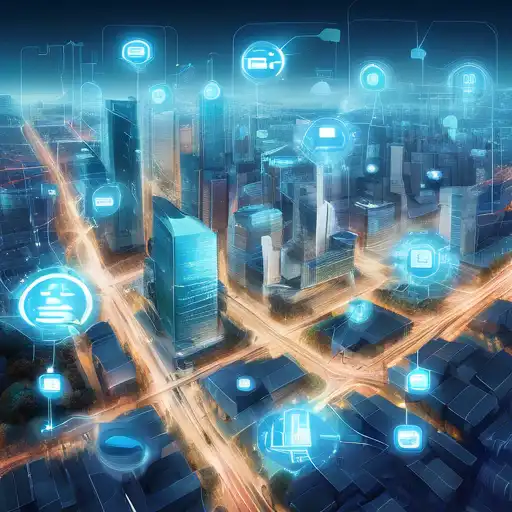Introduction to IoT in Smart Cities
The Internet of Things (IoT) is revolutionizing the way cities operate, making them smarter, more efficient, and more responsive to the needs of their inhabitants. By integrating IoT technologies, urban areas are transforming into smart cities, where data and connectivity improve the quality of life for everyone.
Key Components of IoT in Smart Cities
Smart cities rely on several key components of IoT to function effectively. These include:
- Sensors and Devices: These collect data from the environment, such as air quality levels, traffic patterns, and energy usage.
- Connectivity: High-speed networks enable the seamless transmission of data between devices and central management systems.
- Data Analytics: Advanced algorithms analyze the collected data to identify trends, predict issues, and optimize city operations.
- User Interfaces: Residents interact with smart city services through apps and dashboards, providing feedback and accessing information.
Benefits of IoT in Smart Cities
The implementation of IoT in smart cities offers numerous benefits, including:
- Improved Public Safety: IoT devices can monitor areas for criminal activity or accidents, enabling quicker response times from emergency services.
- Enhanced Transportation: Smart traffic management systems reduce congestion and improve public transit efficiency.
- Environmental Sustainability: IoT helps in monitoring and reducing pollution levels, managing waste more effectively, and conserving water.
- Economic Growth: Smart cities attract businesses and tourists, boosting the local economy and creating jobs.
Challenges and Solutions
Despite its advantages, the integration of IoT in smart cities faces challenges such as privacy concerns, cybersecurity risks, and the need for significant investment. Solutions include implementing robust data protection laws, investing in secure IoT platforms, and fostering public-private partnerships to share the financial burden.
Future Prospects
The future of IoT in smart cities is bright, with advancements in AI and machine learning further enhancing the capabilities of urban IoT systems. As technology evolves, we can expect even greater improvements in city living, making urban areas more livable, sustainable, and efficient.
For more insights into how technology is shaping our world, explore our articles on digital transformation and urban development.
